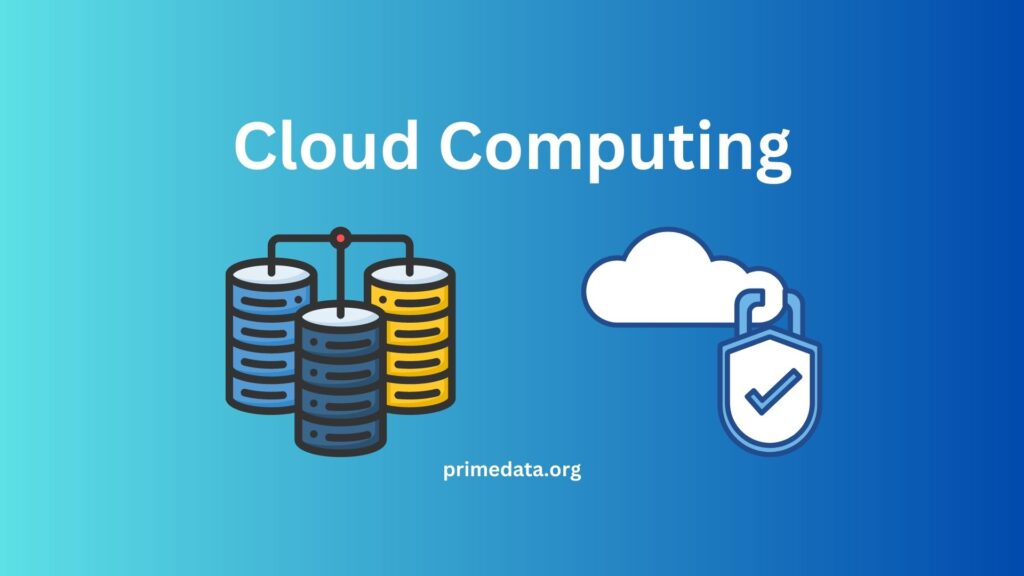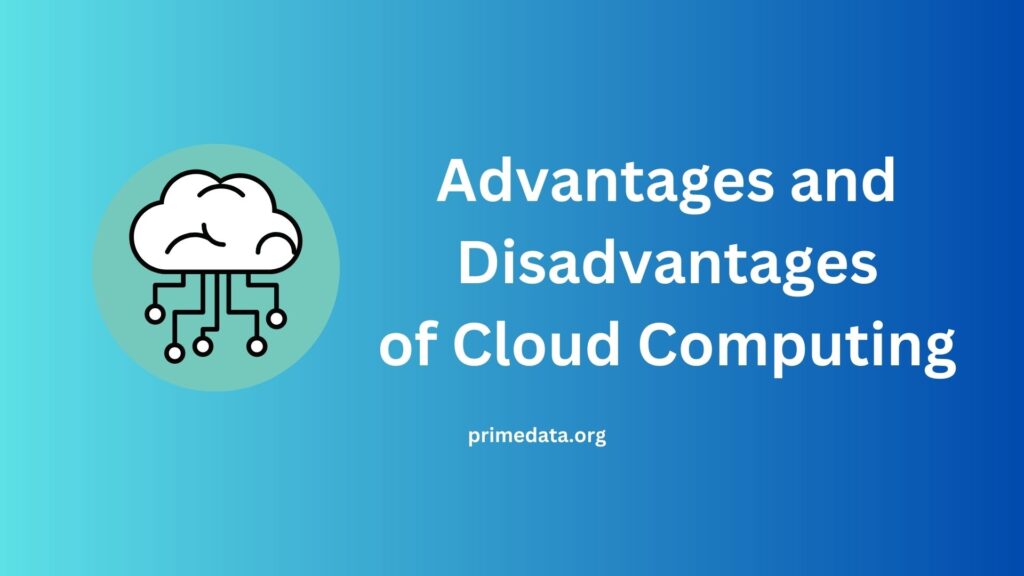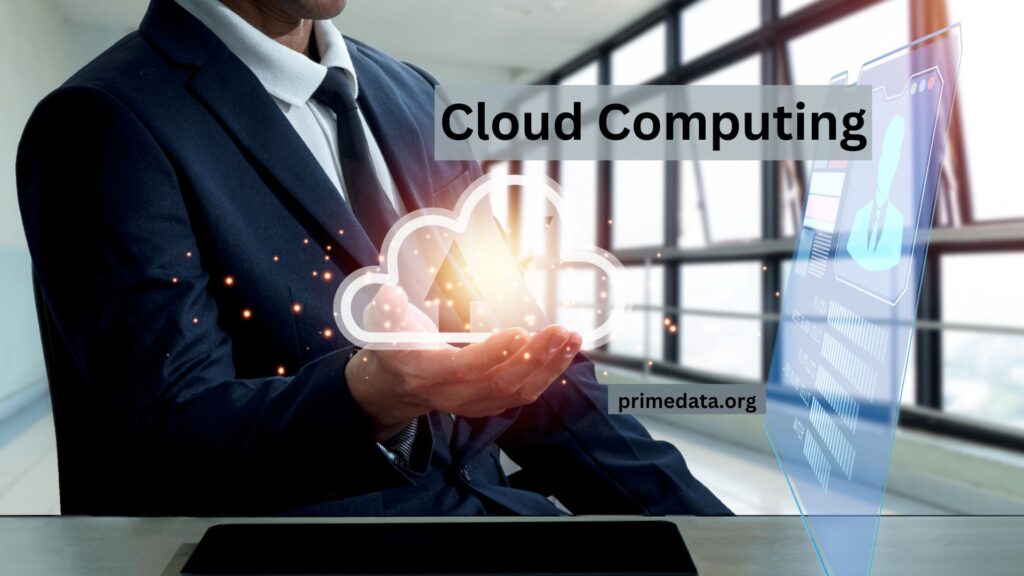Discover the world of cloud computing in simple terms. Learn how cloud technology works, its benefits, and its impact on various industries.
Cloud Computing: A Beginner-Friendly Explanation
In the modern virtual age, cloud computing has emerged as a fundamental technology that powers many aspects of our online lives. Whether you’re streaming films, using social media, or coping with your work documents, possibilities are you’re interacting with cloud in some manner. But what exactly is cloud computing, and how does it affect us? Let’s explore cloud computing, its features, advantages, and real-world applications.
What is Cloud Computing?
Cloud computing refers to using far-off servers, often hosted on the internet, to keep, control, and technique data instead of relying on a nearby PC or server. This technique allows users to access their information and applications from everywhere via a web connection, making record sharing and collaboration extra efficient.

Key Features and Benefits
Cloud offers several vital functions that set it apart from traditional computing methods:
- Scalability: Cloud services can scale up or down based on the call for permitting agencies to avoid over-provisioning or under-provisioning resources.
- Cost-Efficiency: It can notably lessen operational costs by eliminating the need for massive hardware and preservation.
- Accessibility: Users can access their data and applications from various devices, promoting flexibility and remote work capabilities.
- Reliability: Cloud often employ monotony and backups, minimizing the risk of data loss due to hardware failures.
- Collaboration: Cloud-based equipment facilitates seamless collaboration amongst users, as some people can paint on the same record or undertaking in actual time.
What Is Structured Data? A Comprehensive Guide
Advantages and Disadvantages of Cloud Computing
Cloud computing has changed how corporations and people access and control facts and programs. While it gives numerous blessings, it is essential to also bear in mind the capacity of negative aspects. In this newsletter, we’ll explore the benefits and downsides of cloud computing, assisting you in making informed choices about its adoption.
Advantages:
- Scalability: One of the standout blessings of cloud computing is its scalability. Businesses can, without difficulty, scale their assets up or down primarily based on demand, ensuring the most beneficial overall performance without overpaying for unused capability.
- Cost Efficiency: Cloud eliminates extensive hardware investments and maintenance. This translates to cost savings as businesses pay only for the resources they use.
- Accessibility: Cloud services allow users to access their data and applications from any device with an internet connection. This accessibility promotes remote work and collaboration.
- Reliability and Redundancy: Cloud providers frequently implement redundancy measures to ensure high availability of statistics and programs, minimizing downtime and the threat of information loss.
- Automatic Updates: Cloud services companies often replace and hold the underlying infrastructure and software, ensuring customers can access cutting-edge functions and protection patches.
- Global Collaboration: Cloud-based tools facilitate real-time collaboration among individuals or teams across different locations, enhancing productivity.

Disadvantages:
- Security Concerns: Storing sensitive data on remote servers raises security and privacy concerns. Organizations need to evaluate the security measures of their chosen cloud provider carefully.
- Downtime and Reliability: While cloud providers strive for high availability, outages can still occur. Businesses relying heavily on cloud services may face disruptions during rest.
- Limited Control: Cloud involves relinquishing some control over the infrastructure and services to the provider, which may lead to dependency and potential restrictions.
- Internet Dependency: Cloud services require a stable internet connection. Slow or unreliable internet can hinder access to data and applications.
- Data Transfer Bottlenecks: Transferring vast amounts of information to and from the cloud may be time-consuming and bandwidth-in-depth.
- Vendor Lock-In: Moving away from one cloud provider to some other can be challenging and steeply priced due to variations in structures and records codecs.
How to use Pinterest for Blogging
Types of Cloud Services
Cloud computing is typically categorized into three main service models:
- Infrastructure as a Service (IaaS): Offers virtualized computing resources over the internet. Users can rent servers, storage, and networking components pay-as-you-cross.
- Platform as a Service (PaaS): Provides a forum and surroundings for developers to construct, install, and manipulate packages without handling the underlying infrastructure.
- Software as a Service (SaaS): Delivers prepared-to-use software program applications over the net, eliminating the want for installation and upkeep.
Real-World Applications
Cloud computing finds applications across various industries:
- Business: Cloud services empower companies with flexible IT resources, allowing them to focus on innovation rather than infrastructure management.
- Education: Cloud-based educational platforms enable remote learning, providing students and educators easy access to resources and collaboration tools.
- Healthcare: Cloud storage and applications facilitate the secure sharing of patient data among healthcare providers, leading to improved patient care.
- Entertainment: Streaming services rely on cloud infrastructure to deliver content to users on-demand, regardless of location.
Edge Computing vs. Cloud Computing
In the tech world, edge computing, and cloud computing stand as distinct yet interdependent forces. Edge computing processes data close to its source, slashing latency, while cloud computing centralizes resources for scalability and complexity. Together, they form a powerhouse partnership, optimizing data flow and enabling real-time insights.
Edge Computing: Proximity Processing
Edge computing focuses on local data processing, enhancing real-time response. IoT sensors handle immediate tasks, forwarding only crucial data to the cloud. This approach slashes latency and suits applications needing swift reactions, such as self-driving cars.
Cloud Computing: Centralized Excellence
Cloud computing centers on remote servers for storage and processing. Its scalability and accessibility accommodate hefty workloads and complex analytics. This centralized approach suits tasks requiring in-depth analysis and extensive resources.
The Symbiosis:
Edge and cloud computing work harmoniously:
- Speed: Edge computing’s local processing minimizes delays, vital for real-time applications.
- Efficiency: Only relevant data travels to the cloud, optimizing bandwidth usage.
- Flexibility: Cloud computing’s scalability caters to variable demands.
- Analytics: Edge data feeds cloud analytics for profound insights.
- Hybrid: Both collaborate for adaptable solutions.

Applications:
- Intelligent Cities: Edge sensors act swiftly, and cloud analytics plan long-term.
- Healthcare: Local data processing, cloud storage for historical analysis.
- Retail: In-store edge sensors personalize shopping, and the cloud handles inventory insights.
The Future of Cloud Computing
As the generation adapts, cloud computing will play an even more significant position in our lives. Advancements in areas inclusive of aspect computing, synthetic intelligence, and 5G connectivity will, in addition, enhance the abilities of cloud services, allowing quicker and more efficient information processing.
Data Scientist vs Data Engineer
Conclusion
In conclusion, cloud computing has revolutionized the way we shop, get the right of entry, and procedure facts. Its consumer-pleasant nature, price-efficiency, and huge-ranging programs make it a critical device in contemporary digital panorama. Whether you are a scholar, a professional, or absolutely an internet consumer, expertise in cloud computing can offer precious insights into the technology shaping our interconnected international.
